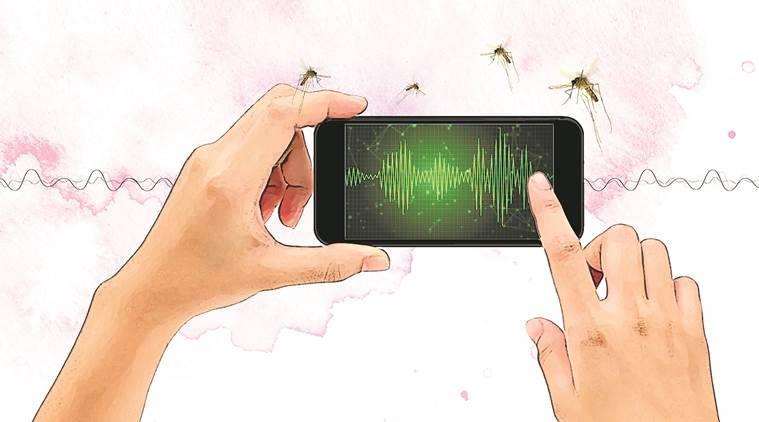
The buzz of a mosquito, however annoying, is a useful identification tool, because mosquitoes have a species-specific wingbeat frequency. Scientists have now set out to use it as a surveillance tool, with help from citizens around the world— and their mobile phones.
All a citizen needs to do is point her mobile at a mosquito, whether it is in free flight or trapped, record at least a second’s duration of sound, and upload the audio on a website, so that Stanford University researchers can feed it into Abuzz, a new system that will identify the species in seconds.
The researchers describe Abuzz in a study published in eLife. “The challenge was to find instruments that could record these sounds clearly enough to measure the pitch, but that were still cheap and sturdy enough to use in mosquito-infested environments,” the study says.
All that Abuzz requires is a mobile with an Internet connection. Modern phones also record additional parameters such as time and location — a requirement for surveillance. “This adds valuable secondary information to acoustic data that is useful for species identification and spatio-temporal mapping,” says the study, suggesting that using phones may be a productive strategy for sampling mosquito population.
“The data will be mapped online on a world map; users can search own or other people’s data. Also, user accounts will have data mapped by them — so they are excited to map more,” lead author Manu Prakash told The Indian Express by email. Haripriya Mukundarajan, Felix Hol, Christine Kurihara and Rebecca Konte were the other researchers.
Mosquito surveillance is of particular significance to India, with its prevalence of vector-borne diseases. “The biology of every mosquito species is different and so is their breeding habitat. Surveillance helps in targeting our measures, including insecticides, and also to check mosquito resistance,” said Dr Kalpana Baruah, joint director of the National Vector Borne Disease Control Programme.
She said the new method appears novel, but added its operational feasibility would have to be tested before she could comment on it.
Prakash said the system was tested in India. “I was in India for Diwali and tested this in Delhi,” he said. “Delhi is filled with Aedes aegypti; and I recorded many mosquitoes and trained locals to do the same. We have been running workshops around the world. We will soon be starting an online training for anyone who is interested in participating.” An app is in the works, Prakash said.
For the study, the researchers tested the accuracy of eight mobile sets, their cost ranging from $20 to $700. Between one phone and another, there was very little variation in the wingbeat frequencies recorded. Field trials were conducted in a tropical village in Madagascar — with CDC light traps placed in the same locations — and in California.

Mapping the distributions of two genera of mosquitoes across the village revealed considerable heterogeneity in the proportions of Anopheles and Culex mosquitoes,” the study says. “This was concordant with the data from CDC light traps… Although the ratio of the two kinds of mosquitoes varied between acoustic recording and conventional trapping at each location, there was a qualitative correspondence between the two methods in terms of the relative number of mosquitoes at a location, and the more numerous species.”
“What we present in our paper is the widest survey of mosquito acoustics done,” Prakash told The Indian Express. “It focuses on 20 most important vectors that transmit human diseases. The goal of engaging citizens around the world is to first expand this database to include all known species of mosquitoes. We are quickly growing the number of species in our database, but we have a long way to go. In the first phase; we will also be recruiting super users who work in the field and both ‘record’ and actually catch the mosquito for identification by an expert. ”
The study notes, however, that mobile phone microphones are short-range devices. It recommends that the mosquito be brought within optimal range to ensure the audio serves the purpose.
Prakash said they worked on compensating for possible corruption in the recording. “Sound bouncing off is not an issue,” he said. “Background noise is; say if someone is talking at the same time. We developed clipping algorithms that take a baseline data and trim it to collect only mosquito sounds out of the same. Users can also trim data manually before sending.”
Source:-The indianexpress




